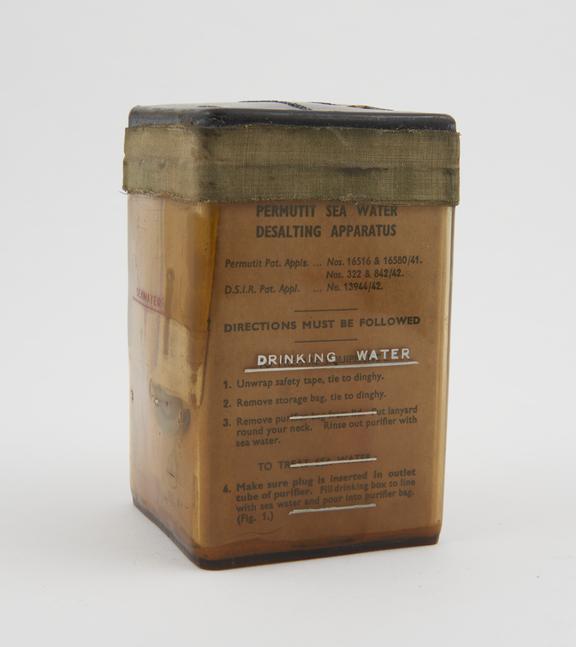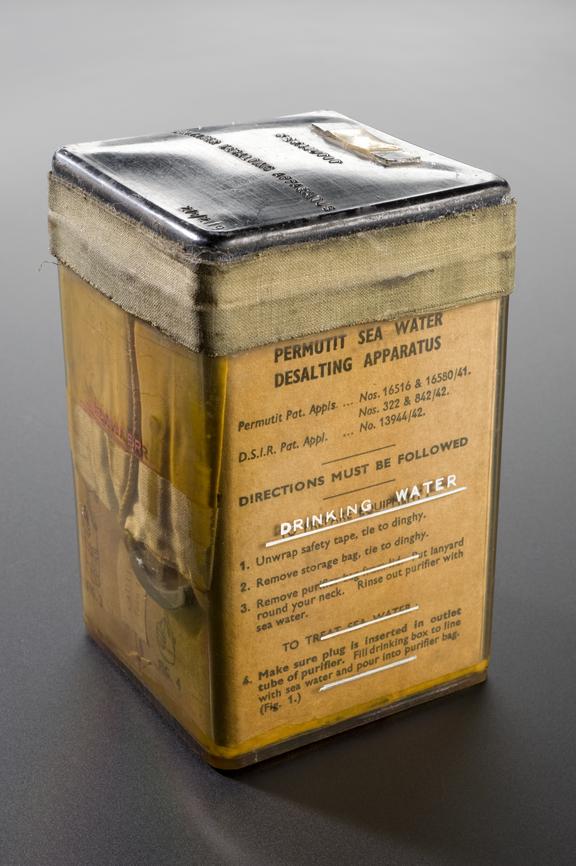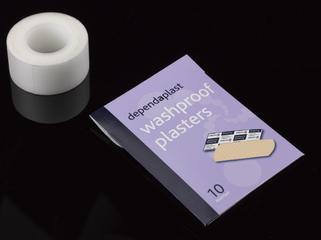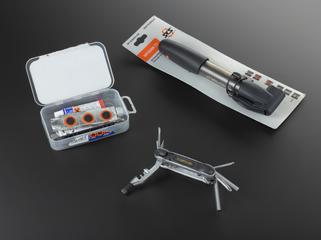
'Permutit' sea water desalination apparatus, London, England, 1940-1945
- maker:
- The Permutit Company Limited




Permutit sea water de-salting apparatus, a device to provide emergency water for RAF pilots and crew shot down during World War Two and carried on flying missions over Europe, developed by engineer Harold S. Lawrence for Permutit Co., London, c. 1940-1945.
This object provided emergency water rations for Royal Air Force (R.A.F) pilots and crew shot down during the Second World War. It is known as a ‘desalination’ or ‘desalting’ apparatus. Sea water cannot be drunk because the body uses large amounts of water to remove the excess salt. This causes further dehydration. The salt in sea water is separated in the device by adding a chemical purifier such as silver zeolite. The outer casing is made of heavy reinforced plastic. This presumably enabled it to withstand potential impact on crash landing.
The apparatus was developed by engineer Harold S. Lawrence (1895-1971) in conjunction with the RAF Physiological Laboratory. It was carried on flying missions over Europe. This example was made by the Permutit Company, manufacturer of water purification equipment.
Details
- Category:
- Emergency Medicine
- Object Number:
- 2005-723
- Materials:
- glass, paper, textile and rubber, chemical purifier, probably silver zeolite.
- Measurements:
-
overall: 120 mm x 75 mm x 75 mm, .88kg
- type:
- desalination apparatus
- credit:
- Monica Britten Exhibition Hall of Medical History




